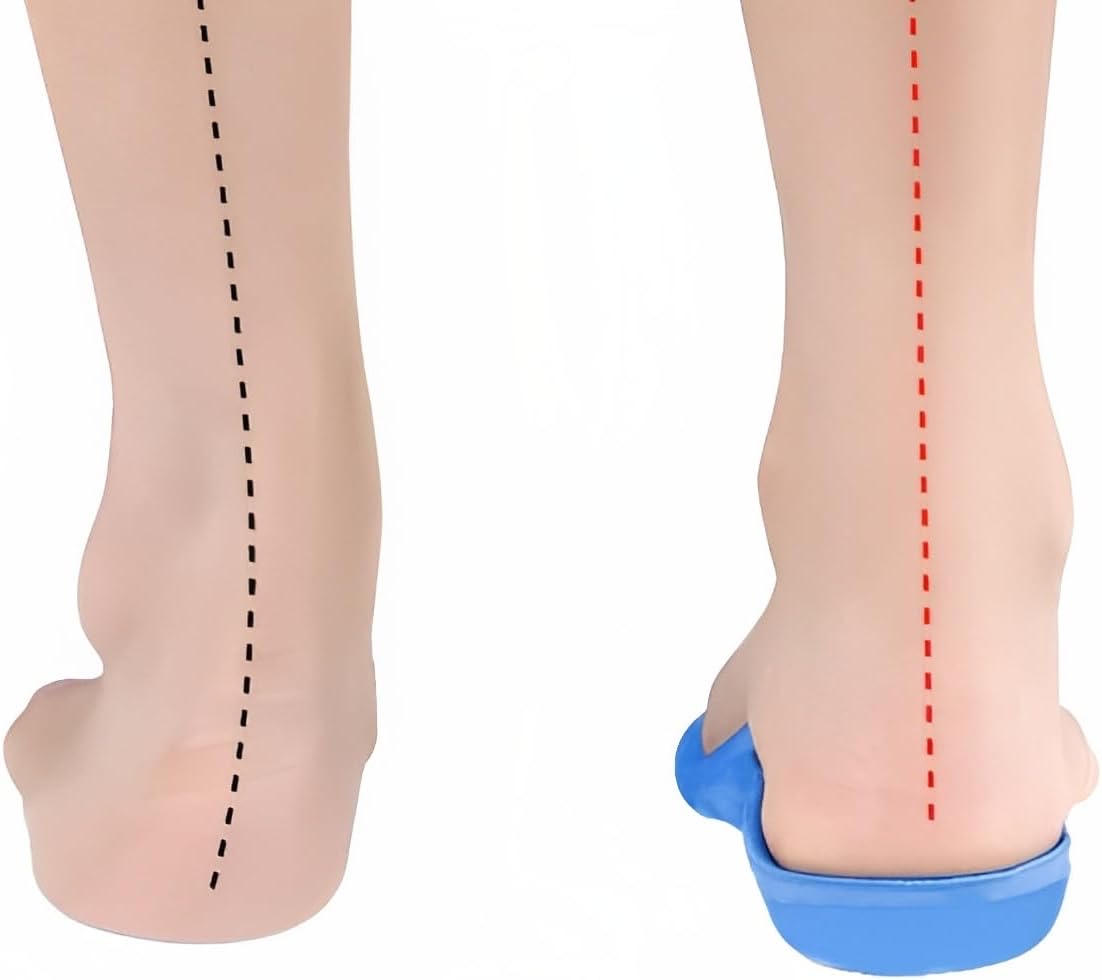
Slimflex
Slimflex Orthotic Insoles offer simple solutions and endless possibilities
Offering support, stability and pain basic relief, Slimflex orthotic insoles are many clinicians’ insole of choice for a multitude of ailments and foot conditions. With differing levels of control and support, Slimflex products are versatile, easy to prescribe and ensures patient compliance. Its neutral moulded insoles are ideal for clinicians worldwide as they can be modified chairside, reducing the need for appointments and therefore improving productivity.
Slimflex - The Professional’s Choice
All Slimflex foot orthotics, including Met pads and heel lifts are prescribed by the NHS. Clinically proven: Slimflex Insoles are prescribed everyday in the NHS and have several research articles backing their use. These uniquely designed and ergonomically advanced plantar fasciitis insoles aim to provide both stability and flexibility. Designed for flat feet, the high arch support bridges the gap between your shoe and the arch of your foot. Contoured design allows the insole to easily fit into narrower style shoes without compromising the efficiency of the orthotic.
Popular Slimflex Products
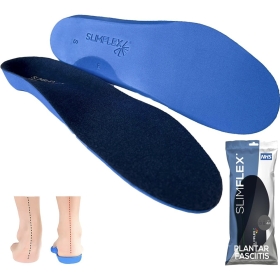
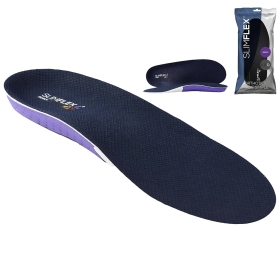
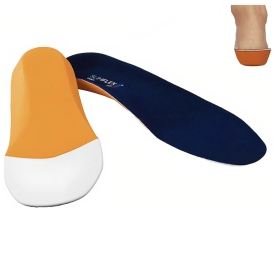
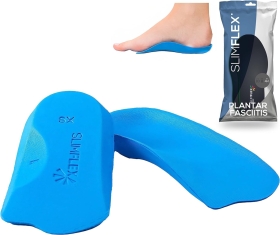
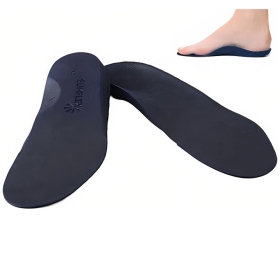
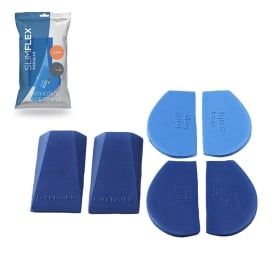
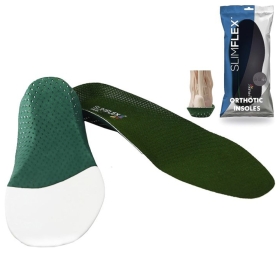
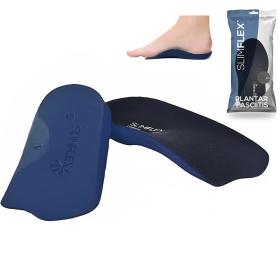
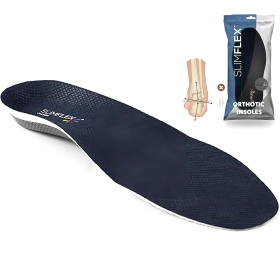
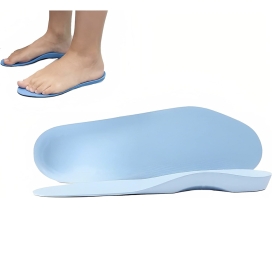
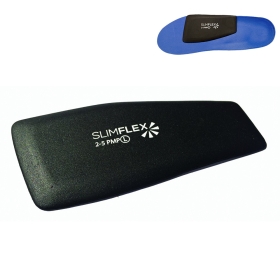
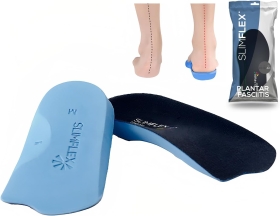
What are Foot Orthotics or AKA Orthotic Insoles?
Redefining the Chairside Orthotic
Foot Orthotics or as consumers know them: Orthotic Insoles have been used for the management of lower-limb and foot pathologies since the 19th century. Clinical studies have shown that Orthotic devices encourage the normal function of the foot by dissipating kinetic forces during the stance phase of gait, incorporating elevated contact surfaces to correct poor biomechanics of the lower-limb, redistributing loads to adjacent foot structures through accommodative moulding and reducing plantar pressures in focal areas which is particularly important in diabetic patients.
Foot Orthotic Types
The most commonly used types of foot Orthotics in clinical settings are: Simple Orthotic Insoles, Custom-made orthotics and Prefabricated or Semi-bespoke Orthotics.
Simple Orthotic Insoles are manufactured using a multi-layered approach, starting with a base, mid layer components and covering materials mainly using open and closed cell polyurethanes as well as leathers and viscoelastic polymers which provide local cushioning and minimal mechanical correction.
Custom-made foot Orthotics are devices manufactured from a foot impression either utilising traditional plaster of Paris casts or different scanning techniques. Devices are traditionally manufactured using more rigid materials such as Polypropylene or various densities of Ethylene Vinyl Acetate (EVA) which provide pressure relief as well as more mechanical correction.
Although in principle more accurate than off the shelf devices, their accuracy will depend greatly on several factors which are independent of the prescribing clinician - not to mention the manufacturing time and potential inaccuracies with the finished device as well as the cost implications associated with their production making this not the most practical or cost effective choice of Orthotic manufacture.
Prefabricated or Semi-bespoke Orthotics are non-custom devices designed to provide a neutral base offering a standard degree of support, although they are not significantly corrective on their own. In conjunction with Slimflex components they can offer a similar degree of correction as custom made devices.
Prefabricated Finshed Devices such as Interpod includes intrinsic posting based on biomechanical, laboratory and clinical experience for an immediate, non-invasive, research-supported treatment.
Diabetes or Arthritis Orthotic Insoles provide moderate support and foot cradling to help prevent pronation and supination while providing comfort and offloading.
When are Custom Devices are required?
An orthotic corrective device worn that can help the muscles, tendons and bones function at their highest potential. Custom-made orthotics are manufactured from a 3D image of your body part using casting materials or 3D scanning devices. When appropriately prescribed to treat a medical condition and custom-made, orthotics can decrease pain in parts of the body, such as your knees, hips and lower back.
How do clinicians determine the best Orthotic solution for a patient?
Orthotic insoles are specialised shoe inserts designed to provide support, stability, and alignment to the feet. They are often used to address various foot problems, including flat arches, high arches, plantar fasciitis, and overpronation.
Podiatrists determine the best orthotic insoles for an individual through a comprehensive assessment that typically involves the following steps:
1. Patient Evaluation: Podiatrists start by evaluating the patient's medical history, including any existing foot conditions or injuries.
2. Foot Examination: They conduct a thorough physical examination of the feet, assessing factors like arch type, gait (walking pattern), and any visible issues such as bunions or calluses.
3. Biomechanical Analysis: This may involve using technologies like gait analysis systems to study how the patient walks or runs. This helps identify any abnormal foot motions that could be causing pain or discomfort.
4. Impressions or Scans: In some cases, podiatrists may take molds of the patient's feet or use 3D scanning technology to create precise foot impressions. This information helps in crafting custom orthotic insoles.
5. Customisation: Based on the gathered data, podiatrists can recommend off-the-shelf or custom-made orthotic insoles. Custom insoles are tailored to the patient's unique foot shape and specific needs.
6. Material Selection: The podiatrist chooses the appropriate materials for the insoles, considering factors such as cushioning, arch support, and shock absorption.
7. Fitting and Follow-up: Once the orthotic insoles are ready, the podiatrist ensures they fit properly in the patient's shoes and may make adjustments if necessary. Follow-up appointments are scheduled to monitor progress and make further adjustments if needed.
The goal is to provide the patient with orthotic insoles that address their specific foot issues and improve comfort and functionality. It's important to note that the choice between custom and off-the-shelf insoles depends on the individual's needs, budget, and the severity of their foot condition. Custom orthotics tend to be more expensive but offer a higher degree of customization and support.
